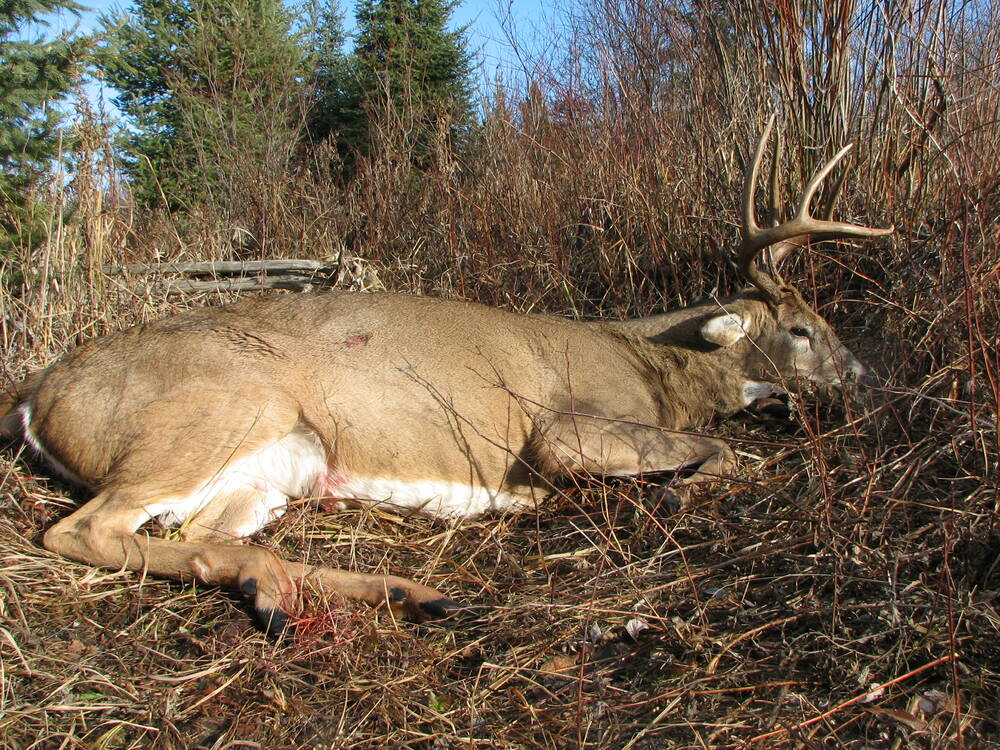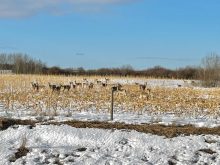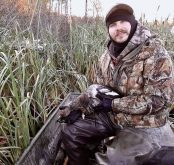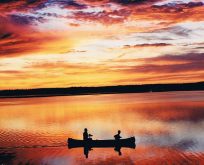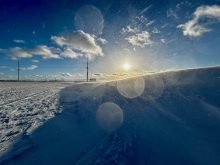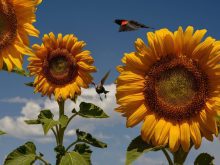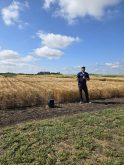Deer hunters are in anticipation mode for the 2024 season, except for a minority who are already out with a bow or muzzleloader.
The wait’s almost over. The general rifle season is just around the corner, starting Nov. 11 in most areas. This season-opener brings more hunters afield than any other opening day in the hunting calendar.

Why it matters: Farmers who also enjoy hunting will be looking for some much-deserved time in pursuit of deer.
There’s a big difference between small game hunting, where a number of birds may be taken in a day, and big game hunting. The latter usually ends with one well-placed shot. As one of my mentors used to say, tongue-in-cheek, “deer hunting is lousy, until it is good. Then it’s over.”
Read Also
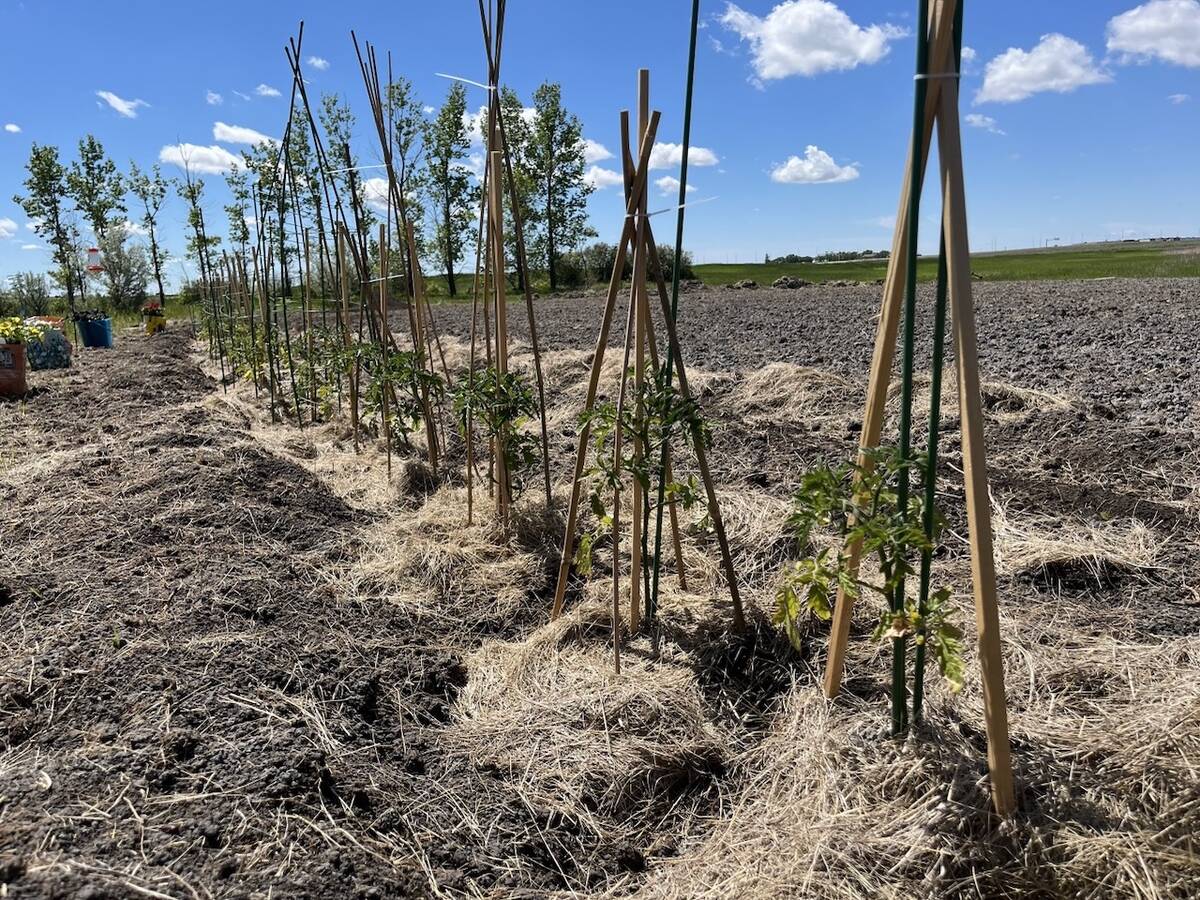
Seeding Indigenous agricultural prosperity
National Circle for Indigenous Agriculture and Food says Indigenous agricultural success needs strong relationships.
If it were that simple, deer hunting wouldn’t be so popular.
Hunting participation has dropped significantly in the last few decades, but the decline has been smallest with deer hunting, which continues to attract many new hunters.
Estimating the number of deer hunters is a challenge (a hunter might buy multiple licenses), but 33,000 is a reasonable guess. In 2023, those hunters also bought 15,500 additional tags for area-specific white-tailed and mule deer hunting opportunities.

For many, the annual deer hunt is conducted with family and friends and is rich with traditions and camaraderie. The sites that are hunted, how they are hunted and who gets what spot on a given day may follow years-long traditions. The resulting stories at the supper table – usually more about misses than hits and always at someone’s expense – is all part of the ritual.
Venison in the freezer is also a strong motivator, but it’s the fellowship tied to deer camp or the family farm that makes deer hunting difficult to pass up.
Deer hunting can also be less strenuous for older hunters than, say, waterfowl hunting, especially if younger folks in the group can take on tasks like hauling out a deer.
Gear and clothes
Rifle hunters can debate ad nauseum about the best gun calibres and bullet sizes for big game. To be honest, I tune out these conversations once it gets past the basics, but I am also comforted knowing that many different rifles will do the job.
The .243 calibre is preferred by many deer hunters, especially those who hunt in open country. Smaller calibres have bullet trajectories are suited to longer shots.
Hunters who look for one rifle to use for all big game will often opt for larger calibres, such as .30-06 or .308. I’m a “one-rifle” guy, and my .308 has served me well over four decades. I find that 150 grain bullets in my rifle work best for deer.
More important is knowing the bullet trajectories that your rifle produces. Sighting in before the hunting season should be considered mandatory.
Set aside an afternoon to head out to a range, or set up targets and a shooting rest somewhere safely out of the way. I use an abandoned gravel pit on Crown land, and I leave with a good idea of where my rifle and loads put bullets both at close range (25 metres) and further out (100-200 metres).
Don’t forget that wearing “hunter orange” is mandatory for rifle hunters. In addition to an orange hat, you need to display at least 2,880 square centimetres of hunter orange on your upper body, visible from all sides. Dressed like that, your odds of being mistaken for a deer are vanishingly small.
Deer hunting, like all other forms of hunting done properly, is a remarkably safe recreational activity.
Your clothing choices depend on the weather and how you are hunting.
Choose boots that are comfortable to walk in, but also keep your feet toasty. When I’m going to spend the day in a deer blind in the late season, I sacrifice some ease of walking for a boot that I use for ice fishing. Today’s highly insulated boots are surprisingly accommodating for walking, and I have no trouble trekking a kilometre or so to get to my blind. If I was going to walk all day, however, I would wear something lighter.

You can’t beat the layer approach for the rest of your body. I make sure my outer shell can accommodate at least four layers of light, compressible garments, especially if I am going to sit for long periods. I lean towards fleece, down and PrimaLoft, a synthetic filler that rivals down in insulation capability.
I also look for layers that can compress easily into a backpack. I bias toward insulated fingered gloves as opposed to mitts for the added dexterity.
The deer hunter’s kit
If you’re hunting within easy distance of a vehicle, gear is easily accessible. Those ranging further away should carry everything they need to conduct the hunt.
My kit includes items I view as hunting essentials and important safety tools. I have a fanny pack for extra bullets, a dressing knife, a small folding saw (with a 15-centimetre blade), disposable gloves, some cord, a headlamp, matches, a pocket-sized emergency blanket, band-aids, gauze and tape, flagging tape, compass, toilet paper, zip-lock bags and a simple deer-hauling harness. I also bring a small GPS unit if I am in a relatively roadless area.
I have a school-sized backpack that can hold extra clothes, water, lunch and a small, folding stool if I expect to be doing some impromptu sitting.

Conducting the hunt
There are three main approaches to hunting deer: deer drives (also known as “pushing bush”), walk-and-stalk hunting and hunting from a stand. My deer hunting has focused on the latter two approaches.
Hunts in farm country with bluffs of trees, wetlands or creek bottoms are typical scenarios for driving, moving deer to the hunters. Drives generally work best with five or six hunters. Two or three walk to flush deer to the remaining hunters, positioned strategically where deer are most likely to run.
Groups that drive deer have often spent years hunting the same spots, and have learned where everyone needs to be positioned. Shots are often being taken at running deer so, in addition to mandatory safety rules, everyone needs to know where everyone else is, as well as where roads and buildings are situated. Shooting skills are an important consideration.

For many years, my brother and I would hunt wooded pastures in western Manitoba using the less obtrusive walk-and-stalk approach. Keeping 50-100 meters apart, we would move slowly and quietly, trying not to make our presence known until we were in range of a deer. When you do put up a deer, a shot might be possible — deer often stand and size up an intruder before bounding off — or it might move into the other hunter’s sights.
These days, I have settled on hunting from a blind, which is often called a stand.
Archery and muzzleloader hunters, whose effective shooting ranges are limited, rely on stands almost entirely. It is also the preferred method for those targeting mature bucks.
Much has been written about the intricacies of stand hunting, but the basics are pretty simple. Stands are usually placed at feeding areas or along well-used deer trails. In both cases, pre-season scouting is required to find good spots.
In farm country, alfalfa fields with woodland borders are favoured locations. Grain, corn and legumes can also attract deer. Stands are often placed at field edges, close to deer trails.
Hardcore deer hunters head into the deer’s backyard, seeking trails in heavier cover that are used by the animals to move between feeding and bedding areas. Archery hunters are especially tied to this approach, which increases the odds of an animal walking by within archery range – generally under 30 metres.
Wind direction and whether it is swirling are key considerations. Hunters may have more than one stand in favoured areas to deal with wind variability.
Many will opt for tree stands, which offer a much better field of view and take advantage of the fact that deer don’t look up very often. Store-bought tree stands now have a dizzying array of options, but all should come with safety harnesses, and using those harnesses should be considered mandatory. I know two hunters who did not use safety equipment and fell out of their stands, enduring serious bone breaks.
I’m not that comfortable with tree stands, so I rely on ground blinds, which I usually build from poles and brush I cut in the forest. If woodcraft isn’t your strong suit, pop-up blinds have become more affordable and increased in popularity.

Whatever approach you choose, cut shooting lanes from your blind to the areas you expect deer to be moving. A bullet or arrow deflected by a branch could foil your chances.
Handling game in the field
There are many excellent videos online that describe field dressing and processing animals. I want to emphasize that you should field dress an animal right away. Once I down and secure an animal, field dressing comes next.
I often hunt alone, so reducing the strain of carcass-hauling is top of mind. I have a three-point harness system with straps for my shoulders and waist, and a rope that ties around the base of the deer’s head or antlers. I also haul in a calf sled after I have made a kill to make the task less arduous.

Back at the camp, I skin the carcass while it is still warm, though I know others who leave the hide on until they are ready to butcher.
After decades of processing my venison, I know the cuts and portions that work for my recipes and family meals. I use the backstrap and hindquarter cuts for barbecuing and roasting and the shanks and front-quarter roasts for braising. The remaining trim is made into burger or sausage.
Taking in the traditions
Whether you’re a seasoned veteran anticipating this year’s deer camp, or someone looking to give deer hunting a try, Manitoba offers a bounty of opportunities. You can treat it as a relatively simple affair, or use every spare moment in the autumn to go looking for deer and potential hunting spots.
Either way, you’re out in nature, perhaps in the company of friends and family, and you may come back with nutritious protein for the table.


